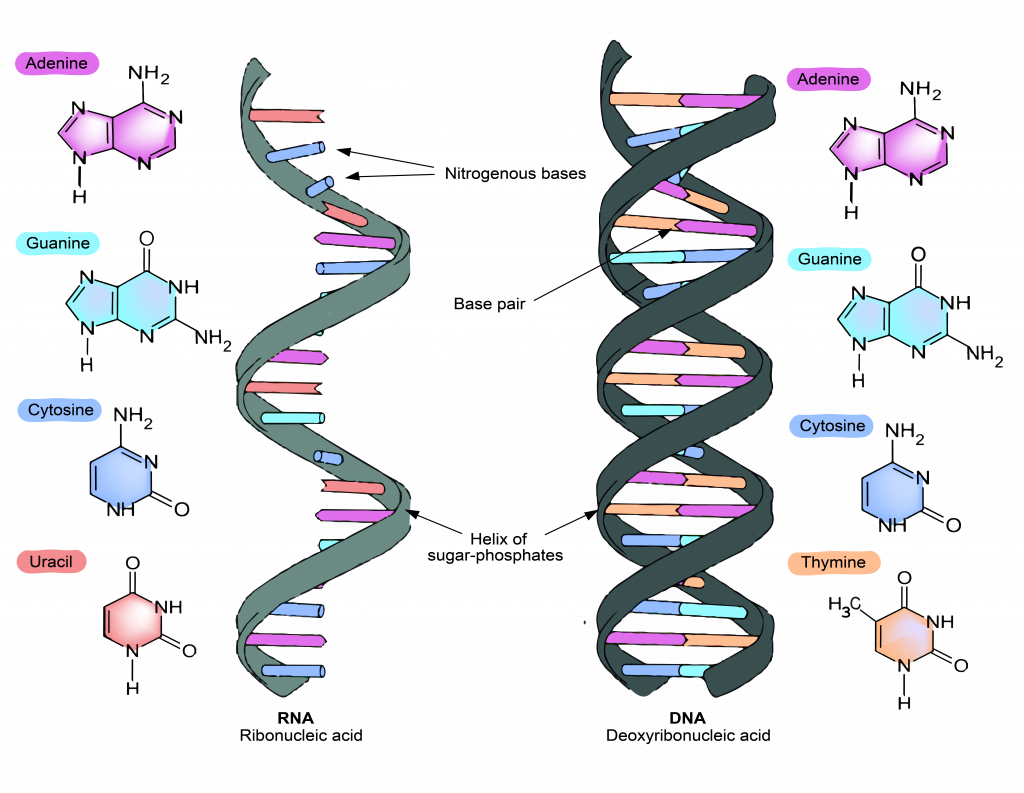5.3 Protein Synthesis Requires RNA
DNA is not the only nucleic acid involved in expressing the message in your genes. Ribonucleic acid (RNA) is another large molecule that is involved in protein synthesis. RNA is similar to DNA in that it also consists of a series of nucleotides anchored by a backbone of repeating sugars and phosphates.
RNA differs from DNA in that it is typically single-stranded, rather than double-stranded. Also, the ribose sugar in RNA’s sugar-phosphate backbone is different from the deoxyribose in DNA. And although three of the four nitrogenous bases of RNA are the same as DNA (adenine (A), guanine (G), cytosine (C)), RNA has the base uracil (U) instead of thymine (T).

Check Yourself
There are three types of RNA involved in protein synthesis
RNA is more diverse than DNA, occurring in several different functional types, three of which are essential to making proteins:
- mRNA, or messenger RNA, conveys DNA’s genetic message in the form of an RNA transcript. An RNA transcript is a sequence of RNA bases complementary to the DNA bases in a gene that is being expressed through protein synthesis.
- tRNA, or transfer RNA, aligns the mRNA transcript with amino acids, the fundamental building blocks of a protein. Each amino acid has a corresponding tRNA molecule, itself complementary to bases in mRNA.
- rRNA, or ribosomal RNA, comprises much of the ribosome, a two-unit cellular structure that is the site of protein synthesis. Typically, human cells each contain several million ribosomes.
Check Yourself

